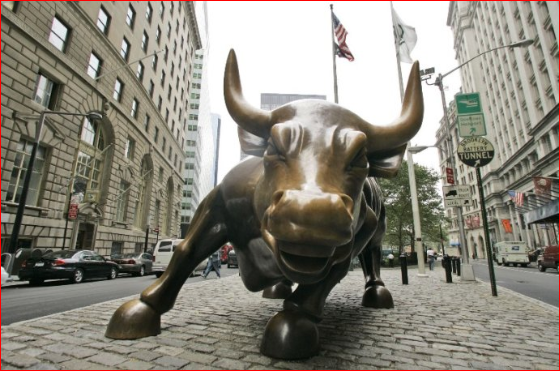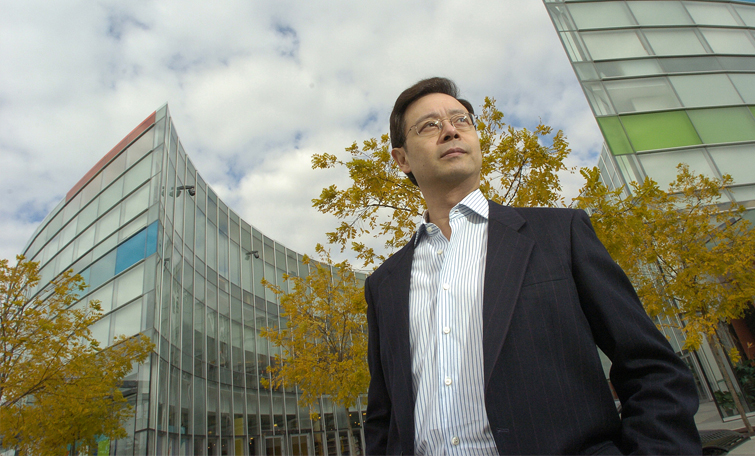How Long Will the US Bull Market Sustain?
- Caifu Magazine | by 《财富世界》
- EN
Although the U.S. stock market still seemed healthy one or two months ago, it deserves public concern over whether the U.S. bull market that has lasted for nearly 10 years has already come to an end.

Although the U.S. stock market still seemed healthy one or two months ago, it deserves public concern over whether the U.S. bull market that has lasted for nearly 10 years has already come to an end.
- Robert Shiller PE - Overvalued
Extreme overvaluation likely caused the bubble to burst. In January 2018, Shiller PE (32.47) of the S&P 500 had far exceeded the historical average (16.83), which was extremely close to the level on the eve of the Great Depression (32.54), approaching 44.19 as of December 1999, the highest point in history.
It is true that we shall not assert that the bubble in the stock market will burst as long as valuation has reached an absolute value. However, rising valuations indicate that trades are being excessively driven by “animal spirits,” and the market's sensitivity to risk premiums has weakened - which is a quite dangerous signal.
- Price Acceleration - Increasing
In most cases, the bursting of stock market bubble in the past was accompanied by a previous surge in stock prices. By monitoring the price acceleration index, maybe we can make basic judgments on the current trend of the U.S. stock market. Historical experience shows that stock prices will experience a period of dormancy before a melt-up period. Once a rising trend proves certain, then the price will surge to new highs. The performance of the S&P 500 from early 2015 to September 2016 seemed to indicate that a new round of a melt-up trend has begun. (Figure 1)
- Trading Strategies - Amplify Volatility
Diversified trading strategies are instrumental to making investments. However, when certain strategies dominate, it will strengthen the consistency of market actions and amplify volatility. At the beginning of February 2018, some widely used trading strategies have mainly led to a stock market plunge.
The “trend tracking strategy,” one of the mainstream investment strategies of the U.S. stock market, has a tendency to pursue rises and kill falls. This determines when the trend is formed, then the influence of either positive or negative signals on the market will be multiplied. The sharp price drop in the U.S. stock market in early February may be caused by additional downward pressure from the forced sell-off mechanism had to be borne by the market as a stop-loss line of certain trend trading strategies had been at stake.
"Risk Parity" another mainstream strategy, can achieve the effect of hedge yields by balancing risk between assets. Given the negative correlation between bond market and stock market returns, bonds are often viewed as a hedging tool for stocks. However, the loose monetary policy adopted in recent years has resulted in excess liquidity, declining opportunity cost of funds, and weakening negative correlations between the stock market and the bond market.
Therefore, the hedging of funds may promote the linkage between the stock market and the bond market, a situation of
- High Proportion of Passive Investment - High Concentration of Funds
In the U.S. stock market, the proportion of passive investment represented by exchange-traded funds (ETF) is continuously expanding. According to Credit Suisse statistics, currently the stocks held by passive investment funds account for nearly 13.7 percent, while that held by active investment funds have dropped to 18 percent. The more active ETF index funds are, the higher the volatility is. Generally, ETF index funds favours individual stocks of large capital and stock sectors that perform well. When selecting ETF funds, investors also prefer investment targets of higher quality and price, which will significantly increase the concentration of funds.
When a small number of large-cap, high-performing sectors gather a huge amount of passive investment funds, and market transactions have almost deviated from the fundamentals and are dominated by unreasonable sentiment, the quantity difference between these stocks whose price rise and those whose price drop will further widen. This is also the significance of our monitored Advance Decline Line, or the AD Line (the difference between the number of rising stocks and that of declining stocks). This accurately reflects that market funds were highly concentrated before the dot-com bubble burst in 2000. The current situation shows that the index has been steadily going up with no sign of falling. This may indicate that the rise of the U.S. stock market has not yet come to an end. (Figure 2)
- Lessons Learned from the Stock Market Disaster in 1987 – the Emergence of Macro Factors
Our comparison shows that the macro environment of the current U.S. stock market is similar to 1987. First, the U.S. dollar has continuously depreciated and the U.S. Dollar Index has been dropping for more than one year. Second, the U.S. Federal Reserve has been in the process of raising interest rates, but the interest rate level still remains relatively low. Third, the tax cut and deregulation policies carried out by President Ronald Reagan in the 1980s encouraged companies to implement leveraged purchases, asset restructuring and stock repurchases. Similarly, this round of rising U.S. stocks are also mainly caused by stock repurchase by companies. As U.S. President Donald Trump implements tax cuts, financial supervision may also be relaxed afterward.
Before the stock market disaster in 1987, some obvious problems happened to macro factors. The most typical one is the deviation of the U.S. dollar index from the trend of U.S. Treasury yields. After November 2017, long-term U.S. Treasury yields continued to rise, while the U.S. dollar index continued to decline. This phenomenon is accelerating in 2018 (Figure 3).
In addition to macro factors, U.S. stock market issues are also emerging. In 1987, the merger and acquisitions (M&A) sector of the U.S. stock market witnessed a most violent price surge. A certain sector’s significant outperformance over the whole stock market is the prerequisite for the stock market to enter the bubble stage.
Currently, the typical phenomenon of the U.S. stock market in 2017 is that the technology sector is the major driving force of the composite index, mainly contributed by giants like Facebook and Google.
It is a matter of time for bubble to burst when macro factors deviate from the rise of the stock market, and the problems of the stock market itself begin to emerge.
The above analysis shows that the positive and negative factors of U.S. markets are intertwined. Good factors include: corporate earnings have performed well or even exceeded expectations; the U.S. economy is fundamentally stable; tax reforms have provided greater incentives to some sectors; various sectors of the U.S. stock market are rising together; and the AD Line hasn’t shown any sign of decline. Negative factors include such risks as high valuation, high acceleration, excessive concentration of funds, and increased volatility as the result of passive investment. Besides, some of the above positive factors may also gradually turn into negative ones. For example, tax reforms implemented by President Trump may fail to achieve its expected outcome. As for the U.S. stock market, negative factors may gradually outnumber the positive ones as the result of such policy pressures as the Federal Reserve’s rate hike and President Trump’s difficulties in governance, as well as Sino-U.S. trade frictions and instable geopolitics.
Of course, it will take time before risks have been accumulated. Currently, inflation remains relatively stable in the United States. Although the year-on-year growth rate of the consumer price index (CPI) is hovering around 2 percent, the core personal consumption expenditure (PCE) price index has been continuously rising. Against the background of the continued recovery of the global economy, combined with high oil prices, the inflation in the U.S. is likely to rapidly go up, which has been listed by many investment agencies as one of the possible black swan events in 2018. Once inflation accelerates, or if the rates of profit growth slows or even drops, then the bull market is likely to change into a bear market in the near future.















